

| Peace Monuments Related to
Andrew Carnegie |
Click here for the Wikipedia biography of Andrew Carnegie [1835-1919]. | Click here for peace philanthropy. | Click here for international peace conferences.
From "Andrew Carnegie’s Educational Efforts For World Peace" by Charles F. Howlett,
Molloy College, Rockville Center, New York (USA):
Between 1903 and the start of World War I, Carnegie endowed four trusts (or foundations) and built three edifices, (or “temples of peace” as he referred to them). The cost of these enterprises was well over twenty-five million dollars.
Two of these so-called peace projects were rather curious. Neither one of these projects received the enthusiastic backing of veteran peace activists who recognized the pitfalls of adverse public opinion to their own “realistic” efforts to win approval for peace treaties and international agreements. Nonetheless, both of these enterprises reflected Carnegie’s quest to use educational techniques to further the goals of world peace and internationalism.
--The Hero Fund with organizations spread throughout Western Europe and the United States was set up [in 1904] to replace battlefield heroes with civilian heroes who saved lives rather than taking them by sword or gun. [According to David Nasaw's biography (Penguin, 2006),
Carnegie once said, "The more men you can kill the greater hero you are... Most of the
monuments in the world are to somebody who has killed a lot of his
fellowmen."]
-- The Simplified Spelling Board under the direction of Melvil Dewey [1851-1931] was designed [in 1906] to simply the spelling of the English language in order to make English universal and an effective means of communication – the lingua franca of the globe.
Carnegie’s best-known peace endeavors were the establishment of the Carnegie Endowment for International Peace in 1910 with ten million dollars and the Church Peace Union in 1914 with two million dollars. [The forner is still called the Carnegie Endowment for International Peace, but the latter is now called the Carnegie Council on Ethics in International Affairs.]
Of these two foundations, the Carnegie Endowment for International Peace had the largest impact. When Carnegie found out that textbook publisher Edwin Ginn [1838-1914] decided to establish his own peace organization, the World Peace Foundation, he immediately enlisted the support of more conservative-minded peace advocates such as former Secretary of War Elihu Root [1845-1937, Nobel Peace Prize in 1912] and Nicholas Murray Butler [1862-1947, Nobel Peace Prize in 1931], president of Columbia University. Carnegie did not want to be outshined. In transferring a portion of his fortune to this educational foundation and its trustees Carnegie stated, “…I leave to them the widest discretion as to the measures and policy they shall from time to time adopt, only premising that the one end they shall keep unceasingly in view until it is attained, is the speedy abolition of international war between so-called civilized nations….” (Allen, 500). Of course, liberal and more radical pacifists were not impressed with Carnegie’s peace foundation due to its elitist underpinnings and reliance on contacts in government circles while also avoiding any involvement with immigrant, moderate socialist, and labor groups.
Despite the suspicions of radical pacifists, Carnegie’s gift to promote peace education was the largest in history to that time. The Carnegie Endowment for International Peace was guided by a scholarly commitment to promote international understanding and global peace through an appeal to the intellectual leaders throughout the world. The endowment consisted of three branches: Division of Intercourse and Education led by Butler; the Division of Economics and History headed by John Bates Clark; and the Division of International Law led by James Brown Scott. The first president was Root who was succeeded by Butler. As a research and educational enterprise the endowment gathered documents on the development of international law, the causes of war, and the record of peace efforts in history. Scholarly examinations and papers were written to discuss all aspects related to war and peace. A research library was set up in its New York City headquarters. The sponsorship of interchanges between American and foreign professors was also established. It also subsidized the efforts of peace societies in the United States and abroad. The foundation was designed to lend an aura of intellectual credibility to the cause of world peace and to reach the public “untouched by the more doctrinaire propaganda of peace organizations” (Curti, 205). The foundation which is still in operation (now headquartered in Washington, D.C.) continues to promote world understanding through education, international cooperation, and the implementation of international law.
As symbols of arbitration and international law and as concrete edifices to learning about peace, moreover, Carnegie’s three “temples of peace” were the Palace of Peace [sic] at The Hague, the Pan-American Union Building in Washington, DC, and the Central American Court of Justice in Costa Rica. All three structures were built as constant reminders of the importance of world peace when faced with the increasing destructiveness of modern warfare. Nevertheless, the outbreak of World War I in 1914 muted much of Carnegie’s enthusiasm for lasting peace. His “last hurrah” was President Wilson’s endorsement of the name Carnegie suggested for an international peacekeeping organization – the League of Nations. He died on August 11, 1919, in Lennox, Massachusetts, three months prior to the US Senate’s rejection of the Treaty of Versailles (1919) which had incorporated Wilson’s plea for the League and Carnegie’s last and final hope for global harmony.
Right click image to enlarge.

|




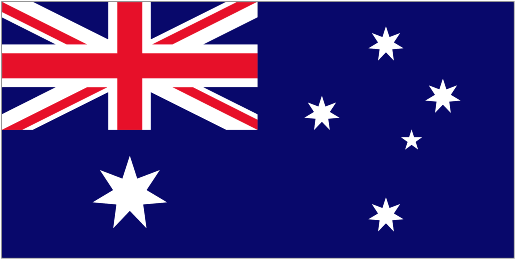
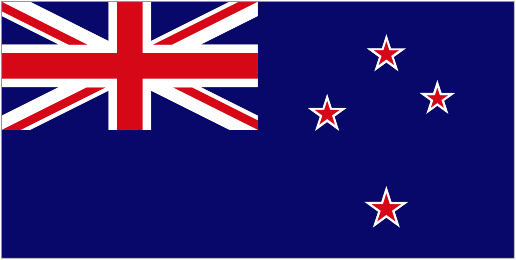
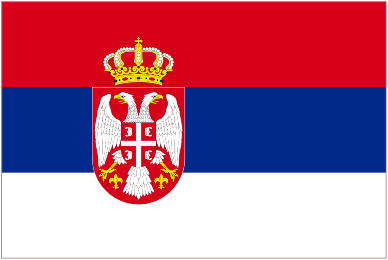

 1883-1929 -Carnegie Libraries. Built with money donated by Scottish-American businessman and philanthropist Andrew Carnegie. More than 2,500 Carnegie libraries were built, including some belonging to public and university library systems.
Of the 2,509 such libraries funded between 1883 and 1929, 1,689 were built in the United States, 660 in Britain and Ireland, 125 in Canada, and others in Australia, New Zealand, Serbia, the Caribbean, and Fiji. Very few towns that requested a grant and agreed to his terms were refused. When the last grant was made in 1919, there were 3,500 libraries in the United States, nearly half of them built with construction grants paid by Carnegie." Image shows 1916 library in Grass Valley, California (USA). 1883-1929 -Carnegie Libraries. Built with money donated by Scottish-American businessman and philanthropist Andrew Carnegie. More than 2,500 Carnegie libraries were built, including some belonging to public and university library systems.
Of the 2,509 such libraries funded between 1883 and 1929, 1,689 were built in the United States, 660 in Britain and Ireland, 125 in Canada, and others in Australia, New Zealand, Serbia, the Caribbean, and Fiji. Very few towns that requested a grant and agreed to his terms were refused. When the last grant was made in 1919, there were 3,500 libraries in the United States, nearly half of them built with construction grants paid by Carnegie." Image shows 1916 library in Grass Valley, California (USA).
|

 October 2, 1889-April 27, 1890 - First International Conference of American States, Wallach Hotel, Washington, DC (USA). "First introduced by [Secretary of State] James G. Blaine [1830-1893] of Maine in order to establish closer ties between the USA & its southern neighbors, specifically Latin America. Blaine hoped that ties between the USA and its southern counterparts would open Latin American markets to US trade." /// Comment Nov. 23, 2011, by Ana Colomar O'Brien, OAS Chief of Protocol: "The purpose of the Organization at its very beginning was the preservation of peace & also of a commercial nature. The US Secretary of State invited in l889 & l890 a large group of Foreign Ministers & high authorities of the Americas to attend a Conference that laid the foundation for the creation of the Pan American Union that later became the Organization of American States (OAS).
The purpose [of the conference] is still nebulous, but I am inclined to believe because of circumstancial evidence that industrialists in the United States were also looking at the expansion of US markets since some of the [conference] topics had to do with customs, a uniform system of weights & measurement, author’s rights, patents, etc.
Several US industrial barons attended this meeting.
This first meeting that was sponsored by the US government had the following representatives attending (these are only a few names):
Andrew Carnegie [1835-1919],
J. Hanson (considered one of the Kings of Cotton in the USA),
William Henry Trescott [1822-1898] (from South Carolina, connected to maritime interests) & fnu Studebaker."
October 2, 1889-April 27, 1890 - First International Conference of American States, Wallach Hotel, Washington, DC (USA). "First introduced by [Secretary of State] James G. Blaine [1830-1893] of Maine in order to establish closer ties between the USA & its southern neighbors, specifically Latin America. Blaine hoped that ties between the USA and its southern counterparts would open Latin American markets to US trade." /// Comment Nov. 23, 2011, by Ana Colomar O'Brien, OAS Chief of Protocol: "The purpose of the Organization at its very beginning was the preservation of peace & also of a commercial nature. The US Secretary of State invited in l889 & l890 a large group of Foreign Ministers & high authorities of the Americas to attend a Conference that laid the foundation for the creation of the Pan American Union that later became the Organization of American States (OAS).
The purpose [of the conference] is still nebulous, but I am inclined to believe because of circumstancial evidence that industrialists in the United States were also looking at the expansion of US markets since some of the [conference] topics had to do with customs, a uniform system of weights & measurement, author’s rights, patents, etc.
Several US industrial barons attended this meeting.
This first meeting that was sponsored by the US government had the following representatives attending (these are only a few names):
Andrew Carnegie [1835-1919],
J. Hanson (considered one of the Kings of Cotton in the USA),
William Henry Trescott [1822-1898] (from South Carolina, connected to maritime interests) & fnu Studebaker."

|   1891 - Carnegie Hall, 881 Seventh Avenue, Manhattan, New York City, New York (USA). "One of the most prestigious venues in the world for classical music and popular music. Carnegie Hall has its own artistic programming, development, and marketing departments, and presents about 250 performances each season.
Other concert halls that bear Carnegie's name include: 420-seat Carnegie Hall in Lewisburg, West Virginia; 1928-seat Carnegie Music Hall in Pittsburgh, Pennsylvania, on the main site of the Carnegie Museums of Pittsburgh; 1022-seat Carnegie Music Hall annexed to Pittsburgh suburb Homestead's Carnegie library; and the first ever Carnegie Hall, a 540-seat venue, in Andrew Carnegie's native Dunfermline." 1891 - Carnegie Hall, 881 Seventh Avenue, Manhattan, New York City, New York (USA). "One of the most prestigious venues in the world for classical music and popular music. Carnegie Hall has its own artistic programming, development, and marketing departments, and presents about 250 performances each season.
Other concert halls that bear Carnegie's name include: 420-seat Carnegie Hall in Lewisburg, West Virginia; 1928-seat Carnegie Music Hall in Pittsburgh, Pennsylvania, on the main site of the Carnegie Museums of Pittsburgh; 1022-seat Carnegie Music Hall annexed to Pittsburgh suburb Homestead's Carnegie library; and the first ever Carnegie Hall, a 540-seat venue, in Andrew Carnegie's native Dunfermline."
|

![]()
|   1892 - Post Building, Homestead, Pennsylvania (USA). Unintentional monument. Used by the Amalgamated Association of Iron and Steel Workers (and the international press) as headquarters during the Homestead Lock Out and Strike of 1892. Now the visitors center of the Rivers of Steel National Heritage Area "The strike began on June 30, 1892, and culminated in a battle between strikers and private security agents on July 6, 1892. One of the most serious disputes in US labor history. The dispute occurred in the Pittsburgh-area town of Homestead, Pennsylvania, between the Amalgamated Association of Iron and Steel Workers (the AA) and the Carnegie Steel Company. The final result was a major defeat for the union, and a setback for efforts to unionize steelworkers... The pumphouse where the gunfight occurred [also] remains as a museum and meeting hall. There are several historical markers as well as a metal commerative sign with the US Steel logo that reads 'In Honor Of The Workers.'" 1892 - Post Building, Homestead, Pennsylvania (USA). Unintentional monument. Used by the Amalgamated Association of Iron and Steel Workers (and the international press) as headquarters during the Homestead Lock Out and Strike of 1892. Now the visitors center of the Rivers of Steel National Heritage Area "The strike began on June 30, 1892, and culminated in a battle between strikers and private security agents on July 6, 1892. One of the most serious disputes in US labor history. The dispute occurred in the Pittsburgh-area town of Homestead, Pennsylvania, between the Amalgamated Association of Iron and Steel Workers (the AA) and the Carnegie Steel Company. The final result was a major defeat for the union, and a setback for efforts to unionize steelworkers... The pumphouse where the gunfight occurred [also] remains as a museum and meeting hall. There are several historical markers as well as a metal commerative sign with the US Steel logo that reads 'In Honor Of The Workers.'"
|

|   1895 - Carnegie Museums of Pittsburgh, Pittsburgh, Pensylvania (USA). "Today, we are a collection of four creative, inspiring, thought-provoking places of exploration: Carnegie Museum of Art, Carnegie Museum of Natural History [shown in image], Carnegie Science Center, and The Andy Warhol Museum. We are the largest, most far-reaching cultural organization in the Pittsburgh region, known throughout the world for our vast art and scientific collections and our scientific research. And we’re a community leader in educational outreach." 1895 - Carnegie Museums of Pittsburgh, Pittsburgh, Pensylvania (USA). "Today, we are a collection of four creative, inspiring, thought-provoking places of exploration: Carnegie Museum of Art, Carnegie Museum of Natural History [shown in image], Carnegie Science Center, and The Andy Warhol Museum. We are the largest, most far-reaching cultural organization in the Pittsburgh region, known throughout the world for our vast art and scientific collections and our scientific research. And we’re a community leader in educational outreach."
|
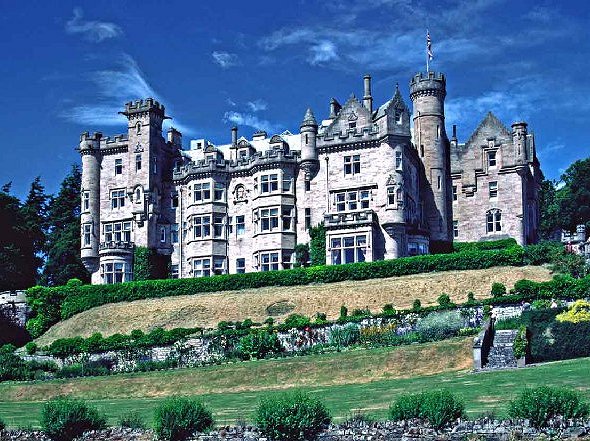
|  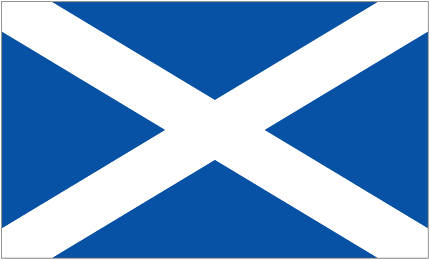 1897-1982 - Skibo Castle, west of Dornoch, Sutherland County (Scotland). Overlooks Dornoch Firth. "Although the castle dates back to the 12th century, the present structure is largely of the 19th century & early 20th century, when it was the home of industrialist Andrew Carnegie. It is now operated as the Carnegie Club, a members-only hotel & country club." 1897-1982 - Skibo Castle, west of Dornoch, Sutherland County (Scotland). Overlooks Dornoch Firth. "Although the castle dates back to the 12th century, the present structure is largely of the 19th century & early 20th century, when it was the home of industrialist Andrew Carnegie. It is now operated as the Carnegie Club, a members-only hotel & country club."
|

|   1903 - Andrew Carnegie Mansion, 2 East 91st Street at Fifth Avenue, Manhattan, New York City, New York (USA). "Andrew Carnegie built his mansion in 1903 and lived there until his death in 1919. It is now the Cooper-Hewitt, National Design Museum, part of the Smithsonian Institution. The surrounding neighborhood on Manhattan's Upper East Side has come to be called Carnegie Hill." 1903 - Andrew Carnegie Mansion, 2 East 91st Street at Fifth Avenue, Manhattan, New York City, New York (USA). "Andrew Carnegie built his mansion in 1903 and lived there until his death in 1919. It is now the Cooper-Hewitt, National Design Museum, part of the Smithsonian Institution. The surrounding neighborhood on Manhattan's Upper East Side has come to be called Carnegie Hill."
|

![]()
|   1903-1907 - Carnegie Institute, Pittsburgh, Pennsylvania (USA). "By 1901, Carnegie committed to the expansion of his Institute, and plans for the addition that would become home to his namesake included a new foyer for the Music Hall, a Hall of Architecture & a Hall of Sculpture. Cost estimates quickly went from $1.75 million, to $3.6 million, to a final cost of more than $5 million. Excavation began on November 1, 1903, and it took the better part of the next four years to complete the project. The new building, much as it stands today (without the Scaife wing, which was added in 1974), was opened with great pomp & circumstance on April 12, 1907." 1903-1907 - Carnegie Institute, Pittsburgh, Pennsylvania (USA). "By 1901, Carnegie committed to the expansion of his Institute, and plans for the addition that would become home to his namesake included a new foyer for the Music Hall, a Hall of Architecture & a Hall of Sculpture. Cost estimates quickly went from $1.75 million, to $3.6 million, to a final cost of more than $5 million. Excavation began on November 1, 1903, and it took the better part of the next four years to complete the project. The new building, much as it stands today (without the Scaife wing, which was added in 1974), was opened with great pomp & circumstance on April 12, 1907."
|

|  1904 - Carnegie Stitchting / Carnegie Foundation, The Hague (Netherlands). Founded to construct & operated the Peace Palace (dedicated in 1913) which it still owns to this day. Wikipedia says the foundation was created in 1903, but it celebrated its own centennial in 1904. 1904 - Carnegie Stitchting / Carnegie Foundation, The Hague (Netherlands). Founded to construct & operated the Peace Palace (dedicated in 1913) which it still owns to this day. Wikipedia says the foundation was created in 1903, but it celebrated its own centennial in 1904.
|


![]()
|   April 14-17, 1907 - First National Arbitration & Peace Conference, Carnegie Hall, New York City, New York (USA). On the eve of the Second Hague Peace Conference. Andrew Carnegie [1835-1919] was president of this conference. Delegates included Baron d'Estournelles de Constant [1852-1924], Prof. Hugo Muensterberg [1863-1916], Robert Ball, William Jennings Bryan, Samuel Gompers, W.T. Stead [1849-1912] & many other dignitaries. Women delegates met separately. Upper image is from the NY Herald Tribune, April 21, 1907. Click here to see advance publicity & Click here for NY Times article about the opening session. Click here for information about the proceedings edited by Robert Erskine Ely (lower image). Were there later conferences of this name? /// The NY Times article says that many foreign delegates had also attended the dedication of the Carnegie Institute in Pittsburgh on April 11, 1907 [sic]. /// N.B.: "Nicholas Murray Butler [1862-1947] chaired the Lake Mohonk Conference on International Arbitration (qv) that met periodically from 1907 to 1912. Butler was president of Columbia University 1902-1945, president of the American branch of the Association for International Conciliation (founded in Paris in 1905 by Baron d'Estournelles de Constant), & president of the Carnegie Endowment for International Peace 1925-1945. He "led five international conferences on international arbitration between 1907 and 1912" & received the Nobel Peace Prize in 1931 (with Jane Addams)." April 14-17, 1907 - First National Arbitration & Peace Conference, Carnegie Hall, New York City, New York (USA). On the eve of the Second Hague Peace Conference. Andrew Carnegie [1835-1919] was president of this conference. Delegates included Baron d'Estournelles de Constant [1852-1924], Prof. Hugo Muensterberg [1863-1916], Robert Ball, William Jennings Bryan, Samuel Gompers, W.T. Stead [1849-1912] & many other dignitaries. Women delegates met separately. Upper image is from the NY Herald Tribune, April 21, 1907. Click here to see advance publicity & Click here for NY Times article about the opening session. Click here for information about the proceedings edited by Robert Erskine Ely (lower image). Were there later conferences of this name? /// The NY Times article says that many foreign delegates had also attended the dedication of the Carnegie Institute in Pittsburgh on April 11, 1907 [sic]. /// N.B.: "Nicholas Murray Butler [1862-1947] chaired the Lake Mohonk Conference on International Arbitration (qv) that met periodically from 1907 to 1912. Butler was president of Columbia University 1902-1945, president of the American branch of the Association for International Conciliation (founded in Paris in 1905 by Baron d'Estournelles de Constant), & president of the Carnegie Endowment for International Peace 1925-1945. He "led five international conferences on international arbitration between 1907 and 1912" & received the Nobel Peace Prize in 1931 (with Jane Addams)."
|

|  July 30, 1907 - Cornerstone laying for the Peace Palace, The Hague (Netherlands). Midway during the Second Hague Peace Conference (qv). Inscription: "'Paci Justitia Firmandaj
Hanc Aedem Andreae Carnegie Munificentia Dedicavit / To preserve Peace through Justice the Munificence of Andrew Carnegie So Dedicates This Temple." /// In America, The Catholic Fortnightly Review publishes "The Apotheosis of Hank Edem": "Hank Edem was a stonemason, and a good one, [but he] could not stand prosperity... Here he is mingling with the effete and the haut monde,
and getting boarding schoolish about his name. Now he spells it 'Hanc Aedem.' We are sorry... Mr.
Carnegie, of course, can spell his name any way he pleases." July 30, 1907 - Cornerstone laying for the Peace Palace, The Hague (Netherlands). Midway during the Second Hague Peace Conference (qv). Inscription: "'Paci Justitia Firmandaj
Hanc Aedem Andreae Carnegie Munificentia Dedicavit / To preserve Peace through Justice the Munificence of Andrew Carnegie So Dedicates This Temple." /// In America, The Catholic Fortnightly Review publishes "The Apotheosis of Hank Edem": "Hank Edem was a stonemason, and a good one, [but he] could not stand prosperity... Here he is mingling with the effete and the haut monde,
and getting boarding schoolish about his name. Now he spells it 'Hanc Aedem.' We are sorry... Mr.
Carnegie, of course, can spell his name any way he pleases."
|
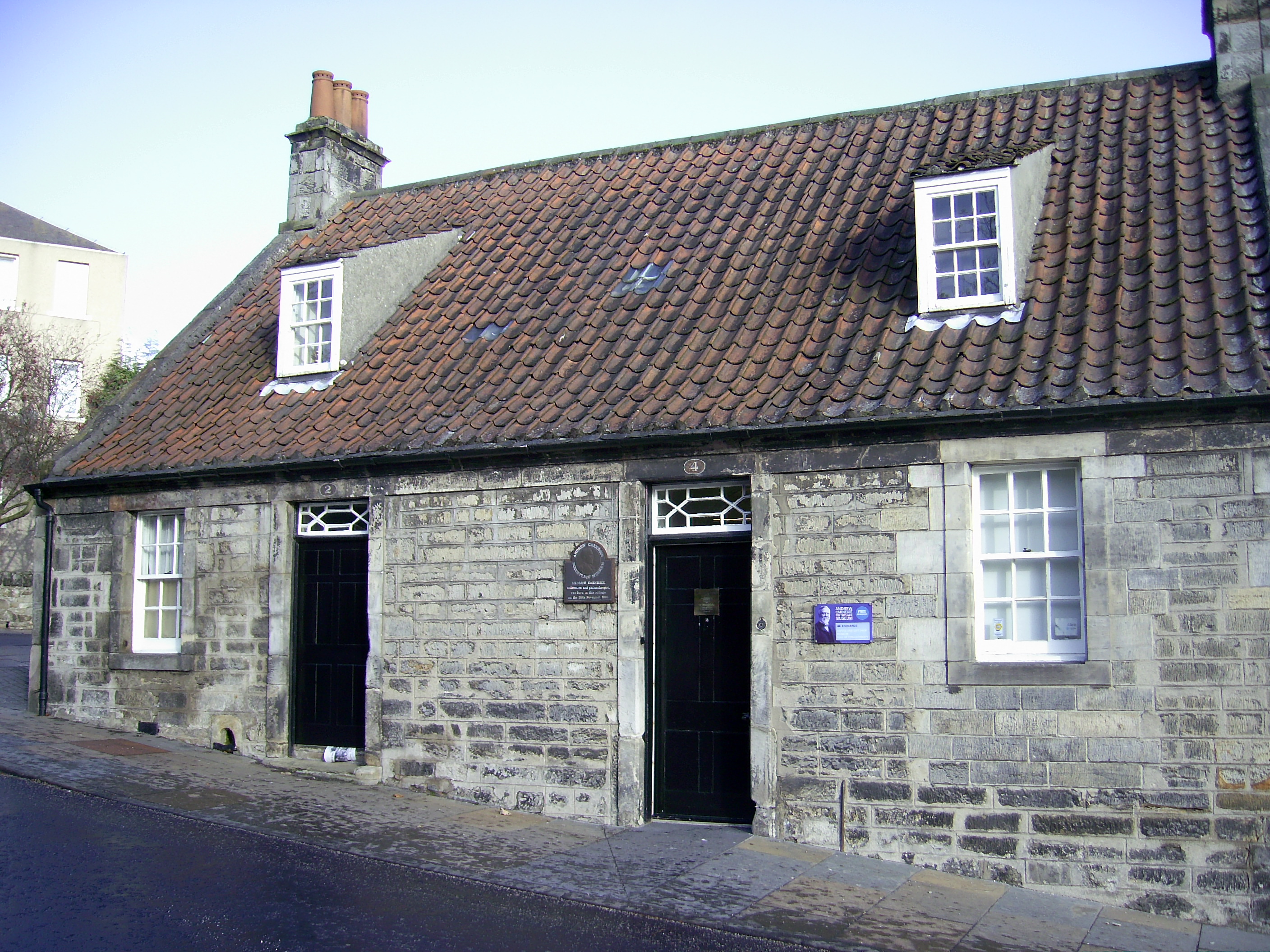 |
  1908 - Andrew Carnegie Birthplace Museum, 4 Moodie Street, Dunfermline, Fife (Scotland). "In 1895 the Birthplace Cottage was bought as a surprise 60th birthday present for Andrew Carnegie by his wife Louise & then let out to tenants. With the creation of the Carnegie Dunfermline Trust in 1903, a caretaker was installed, & in 1908 it was opened to the public. Work began in 1925 on the design by architect James Shearer RSA, and the linked buildings of the Cottage and Memorial Hall were formally opened on 28 June 1928. The Museum has undergone many stages of development over the years, including a major upgrade in 2009." Trustee William Black of "the British Carnegie fund" described in GAC's autobiography (page 157). 1908 - Andrew Carnegie Birthplace Museum, 4 Moodie Street, Dunfermline, Fife (Scotland). "In 1895 the Birthplace Cottage was bought as a surprise 60th birthday present for Andrew Carnegie by his wife Louise & then let out to tenants. With the creation of the Carnegie Dunfermline Trust in 1903, a caretaker was installed, & in 1908 it was opened to the public. Work began in 1925 on the design by architect James Shearer RSA, and the linked buildings of the Cottage and Memorial Hall were formally opened on 28 June 1928. The Museum has undergone many stages of development over the years, including a major upgrade in 2009." Trustee William Black of "the British Carnegie fund" described in GAC's autobiography (page 157).
|

![]()

|   April 26, 1910 - Organization of American States (OAS), 17th Street & Constitution Avenue, NW, Washington, DC (USA). "On April 14, 1890, delegates created the International Union of American Republics 'for the prompt collection and distribution of commercial information.' They also established the Commercial Bureau of the American Republics in Washington as the Union's secretariat, with the participation of 18 Western Hemisphere natiohttp://en.wikipedia.org/wiki/Carnegie_Endowment_for_International_Peacen of the OAS patio. A hybrid of fig and rubber. Planted by President William Howard Taft [1857-1930] during the building's dedication ceremonies in 1910." Image shows John Barret (Director General), Bishop Harding, Amb. de la Barra (México), Andrew Carnegie, President Taft, Philander O. Knox (Secretary of State), Senator Elihu Root, James Cardinal Gibbons & Frederick D. Owen. On April 26, 2010, President Barak Obama "planted a new 'Peace Tree' as a symbol of the OAS’s renewed dedication to its core values of good faith and solidarity for the next 100 years." April 26, 1910 - Organization of American States (OAS), 17th Street & Constitution Avenue, NW, Washington, DC (USA). "On April 14, 1890, delegates created the International Union of American Republics 'for the prompt collection and distribution of commercial information.' They also established the Commercial Bureau of the American Republics in Washington as the Union's secretariat, with the participation of 18 Western Hemisphere natiohttp://en.wikipedia.org/wiki/Carnegie_Endowment_for_International_Peacen of the OAS patio. A hybrid of fig and rubber. Planted by President William Howard Taft [1857-1930] during the building's dedication ceremonies in 1910." Image shows John Barret (Director General), Bishop Harding, Amb. de la Barra (México), Andrew Carnegie, President Taft, Philander O. Knox (Secretary of State), Senator Elihu Root, James Cardinal Gibbons & Frederick D. Owen. On April 26, 2010, President Barak Obama "planted a new 'Peace Tree' as a symbol of the OAS’s renewed dedication to its core values of good faith and solidarity for the next 100 years." 
|

|   December 14, 1910 - Carnegie Endowment for International Peace (CEIP), Washington, DC (USA). Originally located in New York City.
Andrew Carnegie [1835-1919], "like other leading internationalists of his day, believed that war could be eliminated by stronger international laws and organizations." Carnegie charged trustees to use the Endowment to "hasten the abolition of international war, the foulest blot upon our civilization" and chose longtime adviser Elihu Root [1845-1937], Senator from New York and former Secretary of War and of State, to be its head. Root served as Endowment president until 1925. // "Nicholas Murray Butler [1862-1947]
was CEIP president 1925-1945. Butler was also president of Columbia University 1902-1945, chair of the Lake Mohonk Conference on International Arbitration (qv) that met periodically from 1907 to 1912 & was president of the American branch of the Association for International Conciliation (founded in Paris in 1905 by Baron d'Estournelles de Constant). /// Root received the Nobel Peace Prize in 1912, and Butler received it in 1931 (with Jane Addams)." December 14, 1910 - Carnegie Endowment for International Peace (CEIP), Washington, DC (USA). Originally located in New York City.
Andrew Carnegie [1835-1919], "like other leading internationalists of his day, believed that war could be eliminated by stronger international laws and organizations." Carnegie charged trustees to use the Endowment to "hasten the abolition of international war, the foulest blot upon our civilization" and chose longtime adviser Elihu Root [1845-1937], Senator from New York and former Secretary of War and of State, to be its head. Root served as Endowment president until 1925. // "Nicholas Murray Butler [1862-1947]
was CEIP president 1925-1945. Butler was also president of Columbia University 1902-1945, chair of the Lake Mohonk Conference on International Arbitration (qv) that met periodically from 1907 to 1912 & was president of the American branch of the Association for International Conciliation (founded in Paris in 1905 by Baron d'Estournelles de Constant). /// Root received the Nobel Peace Prize in 1912, and Butler received it in 1931 (with Jane Addams)."
|

|  1910 - Central American Court of Justice (CAJC), Cartago (Costa Rica). Andrew Carnegie offered $100K for the purpose of erecting at Cartago a temple of peace for the exclusive use of the Central American Court of Justice. Destroyed by an earthquake later the same year. 1910 - Central American Court of Justice (CAJC), Cartago (Costa Rica). Andrew Carnegie offered $100K for the purpose of erecting at Cartago a temple of peace for the exclusive use of the Central American Court of Justice. Destroyed by an earthquake later the same year.
|

| C
O
N
F |   1911 - Conference for Peace & Arbitration, Mission Inn, Riverside, California (USA). Mission Inn owner Frank Augustus Miller [1857-1935] staged the conference "a year after industrialist Andrew Carnegie established the Endowment for International Peace. Among those attending were naturalist John Muir, Theodore Roosevelt’s Vice President Charles W. Fairbanks & Miller’s good friend, former Stanford University president David Starr Jordan [1851-1931]. /// "Three years after the first Riverside conference, war erupted in Europe. In 1915, Miller's good friend, Roycroft founder Elbert Hubbard & his wife, lost their lives in Germany’s sinking of the ocean liner Lusitania." Was there ever a "second Riverside conferene"? /// Miller founded the Institute of World Affairs (which is now the World Affairs Council of Inland Southern California). In 1925, the Frank A. Miller Testimonial Peace Tower on Mount Rubidoux [image] was constructed to honor him. The tower bears the names & coats of arms of all nations as of 1925. Entry #111 in the "Peace Movement Directory" by James Richard Bennett (2001). 1911 - Conference for Peace & Arbitration, Mission Inn, Riverside, California (USA). Mission Inn owner Frank Augustus Miller [1857-1935] staged the conference "a year after industrialist Andrew Carnegie established the Endowment for International Peace. Among those attending were naturalist John Muir, Theodore Roosevelt’s Vice President Charles W. Fairbanks & Miller’s good friend, former Stanford University president David Starr Jordan [1851-1931]. /// "Three years after the first Riverside conference, war erupted in Europe. In 1915, Miller's good friend, Roycroft founder Elbert Hubbard & his wife, lost their lives in Germany’s sinking of the ocean liner Lusitania." Was there ever a "second Riverside conferene"? /// Miller founded the Institute of World Affairs (which is now the World Affairs Council of Inland Southern California). In 1925, the Frank A. Miller Testimonial Peace Tower on Mount Rubidoux [image] was constructed to honor him. The tower bears the names & coats of arms of all nations as of 1925. Entry #111 in the "Peace Movement Directory" by James Richard Bennett (2001).
|

| F
O
U
N
T
A
I
N |  August 28, 1913 - Peace Fountain, Peace Palace, The Hague (Netherlands). Inscription names Abraham Pieter Cornelis van Karnebeek [1836-1925] & others responsible for creating the Peace Palace. August 28, 1913 - Peace Fountain, Peace Palace, The Hague (Netherlands). Inscription names Abraham Pieter Cornelis van Karnebeek [1836-1925] & others responsible for creating the Peace Palace.
|
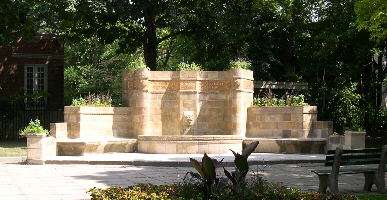
| F
O
U
N
T
A
I
N |  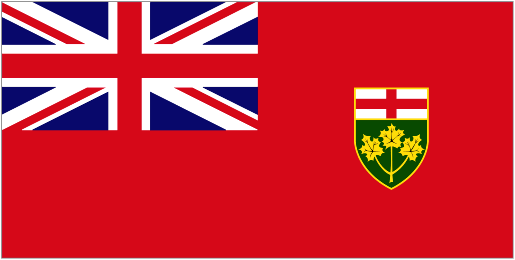 September 14, 1929 - Peace Fountain, Amsterdam Park, St. Clair Avenue W at Avenue Road, Toronto, Ontario (Canada). Inscribed: "[Replica of] the fountain at [the Peace] Palace, The Hague. Present September 14, 1929 - Peace Fountain, Amsterdam Park, St. Clair Avenue W at Avenue Road, Toronto, Ontario (Canada). Inscribed: "[Replica of] the fountain at [the Peace] Palace, The Hague. Present
|

|   February 1914 - Church Peace Union (CPU), Merrill House
170 East 64th Street, New York City, New York (USA). "The CCEIA was founded in New York City in 1914, when Andrew Carnegie [1835-1919] assembled a group of leaders in religion, academia and politics and appointed them trustees of an organization named the Church Peace Union (CPU). Through the CPU, Carnegie hoped to mobilize the world's churches, religious organizations and other spiritual and moral resources to join in promoting moral leadership and finding alternatives to armed conflict. Rev. William Pierson Merrill [1867-1954], pastor of New York's Brick [Presbyterian] Church, became the first president of the CPU... In 1961, the CPU was renamed Council on Religion & International Affairs (CRIA)... In 2005, the Council changed its name to Carnegie Council for Ethics in International Affairs (CCEIA)." February 1914 - Church Peace Union (CPU), Merrill House
170 East 64th Street, New York City, New York (USA). "The CCEIA was founded in New York City in 1914, when Andrew Carnegie [1835-1919] assembled a group of leaders in religion, academia and politics and appointed them trustees of an organization named the Church Peace Union (CPU). Through the CPU, Carnegie hoped to mobilize the world's churches, religious organizations and other spiritual and moral resources to join in promoting moral leadership and finding alternatives to armed conflict. Rev. William Pierson Merrill [1867-1954], pastor of New York's Brick [Presbyterian] Church, became the first president of the CPU... In 1961, the CPU was renamed Council on Religion & International Affairs (CRIA)... In 2005, the Council changed its name to Carnegie Council for Ethics in International Affairs (CCEIA)."
|
The first resolution of the Church Peace Union was signed on February 10, 1914, by the following:
PETER AINSLIE, Rev., Disciples of Christ (Christian Church). Pastor of the Christian Temple in Baltimore. President 1910-1925 of the Association for the Promotion of Christian Unity. Attended the first Universal Christian Conference on Life and Work in Stockholm, Sweden, August 18-30, 1925. Described in GAC's autobiography (page 218).
ARTHUR Judson BROWN, Rev., General Secretary of the Presbyterian Board of Foreign Missions. Called a "missionary statesman." Attended the first Universal Christian Conference on Life and Work in Stockholm, Sweden, August 18-30, 1925.
FRANCIS E. CLARK, Rev., Congregational minister in Maine. Founded Christian Endeavor.
William Herbert Parry FAUNCE, Dr., Baptist minister, professor at various universities, president of Brown University
James Cardinal GIBBONS, Archbishop of Baltimore
DAVID Hummell GREER, Episcopal Bishop in New York City.
FRANK Oliver HALL [1860-1940], Rev., Universalist. Writer. Minister of the Church of the Divine Paternity (the original organ of which was donated by Andrew Carnegie), New York City. Chaplain of the Empire State Society of the Sons of the American Revolution. Chair of the Universalist Commission on Social Service.
E. R. HENDRIX, Methodist bishop. Did missionary work in Korea.
EMIL Gustav. HIRSH, Rabbi in Chicago.
HAMILTON HOLT, editor of The Independent 1897-1921. Founding member of the National Association for the Advancement of Colored People in 1909. President of Rollins College, Winter Park, Florida, 1925-1949. Constructed an anti-war monument at Rollins in 1938.
WILLIAM Isaac HULL, Prof., Quaker pacifist, professor of history at Swarthmore College. Wrote numerous books and articles, particularly on the subjects of Quakers in Holland, William Penn, peace, and international relations.
CHARLES Edward JEFFERSON, Rev., Congregational minister, pastor of the Broadway Tabernacle in New York City.
JENKIN LLOYD JONES, Rev., Unitarian minister in Chicago, organized Parliament of the World's Religions in 1893.
WILLIAM LAWRENCE, Bishop of Massachusetts. Known as "The Banker Bishop."
FREDERICK LYNCH, Rev., Secretary of the Church Peace Union. Executive Secretary of Commission on Peace & Arbitration of the Council of the Churches of Christ. Author of "The Peace Problem."
CHARLES S. MACFARLAND, Rev., Congregational minister, professor at Yale Divinity School, author of "Trends of Christian Thinking."
MARCUS M. MARKS, wholesale clothier, Manhattan Borough President
SHAILER MATHEWS, Dean of the Divinity School, University of Chicago. Involved in the Social Gospel movement.
EDWIN D. MEAN. Freethinker? One of 15 persons named as contributors to "Open Court," a "new fortnightly" in Chicago in 1887 which "aim[s] to establish Ethics and Religion on the basis of Science" edited by Sara A. Underwood, author of "Heroines of Freethought" (1867) and "Automatic or Spirit Writing - With Other Psychic Experiences" (date?). Elizabeth Cady Stanton is also one of the 15 named contributors.
WILLIAM PIERSON MERRILL, Rev., pastor of Brick Presbyrterian Church in New York City. His sermon on peace "delighted Carnegie." First president of the Church Peace Union. Namesake of its headquarters in New York City (qv above).
JOHN Raleigh MOTT, Methodist layperson. Leader of the YMCA & World Student Christian Federation. Received Nobel Peace Prize in 1946. Described in GAC's autobiography (page 206).
GEORGE A. PLIMPTON, publisher, headed Ginn & Company (textbook publisher) "for many decades." Apparently worked for Edwin Ginn [1838-1914], qv above.
JUNIUS B. REMENSNYDER, Rev., St. James's Evangelical Luthern Church in New York City. Letters in New York Times on November 20, 1913, & August 26, 1916.
HENRY WADE ROGERS, Judge, Second Circuit Court of Appeals. Appointed by President Woodrow Wilson.
ROBERT Elliott SPEER, Presbiterian missionary leader. Described in GAC's autobiography (page 206).
FRANCIS LYNDE STETSON, lawyer in New York City. Incorporator of railroads & US Steel Corporation. His estate Skylands (where he entertained such friends as Grover Cleveland, Andrew Carnegie, Ethel Barrymore and J.P. Morgan) has become the New Jersey State Botanical Garden.
JAMES Joseph WALSH, Dr., physician & popular author. Catholic layman. Studied in Paris, Vienna & Berlin.
Luther B. WILSON III, Methodist Bishop in New York City. Served in the YMCA during World War I. President of the Anti-Saloon League of America. President of the Methodist Board of Foreign Missions.

| 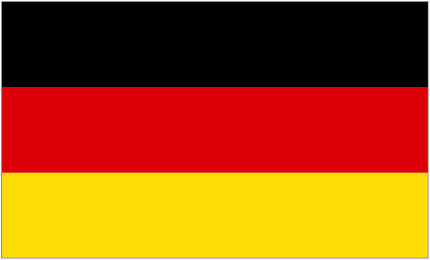 August 1, 1914 - Insel Mainau / Mainau Island, Meersburg, Lake Constance (Germany. First conference of the Church Peace Union (CPU).
"The timing of the CPU's founding was significant. On the very eve of World War I, Carnegie sought to make war obsolete for all time. For its inaugural international event, the CPU sponsored a conference to be held on the shores of Lake Constance in southern Germany. As the delegates made their way to the conference by train, Germany was invading Belgium." " Delegates met on 1st August, the day the Kaiser ordered mobilisation. They were allowed to leave the country on the last train to France, and then boarded a steamer for London." [PvdD 16Jul10]. August 1, 1914 - Insel Mainau / Mainau Island, Meersburg, Lake Constance (Germany. First conference of the Church Peace Union (CPU).
"The timing of the CPU's founding was significant. On the very eve of World War I, Carnegie sought to make war obsolete for all time. For its inaugural international event, the CPU sponsored a conference to be held on the shores of Lake Constance in southern Germany. As the delegates made their way to the conference by train, Germany was invading Belgium." " Delegates met on 1st August, the day the Kaiser ordered mobilisation. They were allowed to leave the country on the last train to France, and then boarded a steamer for London." [PvdD 16Jul10].
|

|  December 13, 1918 - Paris (France). Resolution of the Church Peace Union cabled to President Woodrow Wilson in Paris over the signatures of the following CPU trustees: Peter Ainslie, Henry A. Atkinson, Arthur J. Brown, Francis E. Clark, W.H.P, Faunce, James Cardinal Gibbons, Frank Oliver Hall, Hamilton Holt, William I. Hull, Charles E. Jefferson, Frederick Lynch, Charles S. MacParland, Marcus M. Marks, Dean Shailer Mathews, Edwin D. Mead, William Pierson Merrill, John R. Mott, George A. Plimpton, Junius B. Remensynder, Henry Wade Rogers, Robert E. Speer, James J. Walsh, Luther B. Wilson, and Robert H. Gardiner. December 13, 1918 - Paris (France). Resolution of the Church Peace Union cabled to President Woodrow Wilson in Paris over the signatures of the following CPU trustees: Peter Ainslie, Henry A. Atkinson, Arthur J. Brown, Francis E. Clark, W.H.P, Faunce, James Cardinal Gibbons, Frank Oliver Hall, Hamilton Holt, William I. Hull, Charles E. Jefferson, Frederick Lynch, Charles S. MacParland, Marcus M. Marks, Dean Shailer Mathews, Edwin D. Mead, William Pierson Merrill, John R. Mott, George A. Plimpton, Junius B. Remensynder, Henry Wade Rogers, Robert E. Speer, James J. Walsh, Luther B. Wilson, and Robert H. Gardiner.
|
 |  August 11, 1919 - Andrew Carnegie dies (age 83) at Shadow Brook on Lake Mahkeenac in Lenox, Massachusetts (USA). Carnegie bought the 250-acre estate in October 1916 for $350,000. "The imposition of the Federal income tax in 1913 ended construction of country mansions in the Berkshires, & the estates started to break up during the 1920's. Carnegie’s widow Louise sold Shadowbrook to the Jesuits for a seminary in 1922. The Depression made it harder to maintain the estates, and labor was scarce during World War II. After WW-II, some of the estates were torn or burned down. Others became schools or seminaries. Some estates became preparatory schools, although they would close by the 1970's and 1980's. The Shadowbrook property is now the Kripalu Yoga Center." August 11, 1919 - Andrew Carnegie dies (age 83) at Shadow Brook on Lake Mahkeenac in Lenox, Massachusetts (USA). Carnegie bought the 250-acre estate in October 1916 for $350,000. "The imposition of the Federal income tax in 1913 ended construction of country mansions in the Berkshires, & the estates started to break up during the 1920's. Carnegie’s widow Louise sold Shadowbrook to the Jesuits for a seminary in 1922. The Depression made it harder to maintain the estates, and labor was scarce during World War II. After WW-II, some of the estates were torn or burned down. Others became schools or seminaries. Some estates became preparatory schools, although they would close by the 1970's and 1980's. The Shadowbrook property is now the Kripalu Yoga Center."
|

| H
A
L
L
|   1925 - Carnegie Hall, New York City, New York (USA). "Mrs. Louise Carnegie sells Carnegie Hall to real estate developer Robert E. Simon. Simon promises the 'continued operation of the auditorium of Carnegie Hall for five years, unless another hall, capable of taking its place, is sooner constructed,' and went to great lengths to reassure both tenants & music patrons that he had no intention of tearing it down—so long as it continued to pay for itself. To this end, he redecorated the halls & corridors, modernized the physical plant, and installed an art gallery (in the space now occupied by Citi Cafe) to display works by the Hall’s studio tenants. He also carved out several street-level storefronts, a utilitarian move that would later make preservationists cringe." 1925 - Carnegie Hall, New York City, New York (USA). "Mrs. Louise Carnegie sells Carnegie Hall to real estate developer Robert E. Simon. Simon promises the 'continued operation of the auditorium of Carnegie Hall for five years, unless another hall, capable of taking its place, is sooner constructed,' and went to great lengths to reassure both tenants & music patrons that he had no intention of tearing it down—so long as it continued to pay for itself. To this end, he redecorated the halls & corridors, modernized the physical plant, and installed an art gallery (in the space now occupied by Citi Cafe) to display works by the Hall’s studio tenants. He also carved out several street-level storefronts, a utilitarian move that would later make preservationists cringe."
|

| H
O
U
S
E
|   1979 - Elihu Root House, 101 College Hill Road, Clinton, New York (USA). Purchased by Root as a summer home in 1893. Named to the National Register of Historic Places and declared a National Historic Landmark in 1972, at which time it was still owned by Root's descendants. Located on the campus of Hamilton College, an institution with which Root was affiliated throughout his life. The house was acquired by Hamilton College in 1979. Elihu Root [1845-1937] received the Nobel Peace Prize in 1912. 1979 - Elihu Root House, 101 College Hill Road, Clinton, New York (USA). Purchased by Root as a summer home in 1893. Named to the National Register of Historic Places and declared a National Historic Landmark in 1972, at which time it was still owned by Root's descendants. Located on the campus of Hamilton College, an institution with which Root was affiliated throughout his life. The house was acquired by Hamilton College in 1979. Elihu Root [1845-1937] received the Nobel Peace Prize in 1912.
|

|   1996 - Historical Marker, Pittsburgh Street, Springdale, Pennsylvania (USA). "The heritage of the Carnegie Hero Fund was commemorated in 1996 by the Pennsylvania Historical and Museum Commission through the issuance of a roadside marker, which was installed near the sites of both the mine and the cemetery in which many of the disaster's victims were buried [after the massive explosion on January 25, 1904, in a coal mine at Harwick, PA, near Pittsburgh, claimed 181 lives and inspired Carnegie to create the Fund]. More than 1,600 such markers have been issued by the state since the program's inception in 1946. The blue and gold signs dotting the state's highways commemorate subjects having meaningful impact and statewide or national significance." 1996 - Historical Marker, Pittsburgh Street, Springdale, Pennsylvania (USA). "The heritage of the Carnegie Hero Fund was commemorated in 1996 by the Pennsylvania Historical and Museum Commission through the issuance of a roadside marker, which was installed near the sites of both the mine and the cemetery in which many of the disaster's victims were buried [after the massive explosion on January 25, 1904, in a coal mine at Harwick, PA, near Pittsburgh, claimed 181 lives and inspired Carnegie to create the Fund]. More than 1,600 such markers have been issued by the state since the program's inception in 1946. The blue and gold signs dotting the state's highways commemorate subjects having meaningful impact and statewide or national significance."
|
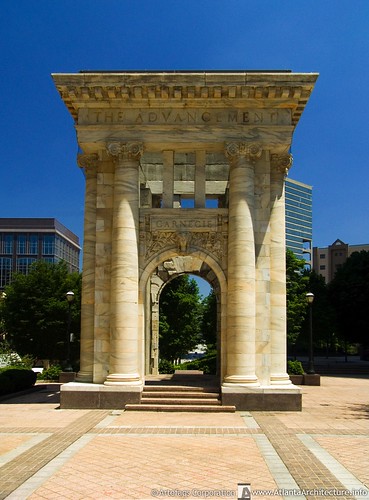
![]()
|   1996 - Carnegie Monument, Hardy Ivy Park, 310 Peachtree Street, Atlanta, Georgia (USA). Formally named the Carnegie Education Pavillion. "Created from the intricate facade of the downtown Carnegie Central Library, which was built in 1901 and demolished in 1977 to make way for the Fulton County Library that now stands at that site. Fortunately, these architectural bays were preserved and ultimately used to create this elegant 23 foot square pavilion in 1996. In homage to the Carnegie legacy, it is a monument to higher education in Atlanta with the seals of nine local area colleges and universities embedded in the pavilion floor." Fragments under the pediments: THE ADVANCEMENT. OF LEARNING. MILTON. CARNEGIE. 1996 - Carnegie Monument, Hardy Ivy Park, 310 Peachtree Street, Atlanta, Georgia (USA). Formally named the Carnegie Education Pavillion. "Created from the intricate facade of the downtown Carnegie Central Library, which was built in 1901 and demolished in 1977 to make way for the Fulton County Library that now stands at that site. Fortunately, these architectural bays were preserved and ultimately used to create this elegant 23 foot square pavilion in 1996. In homage to the Carnegie legacy, it is a monument to higher education in Atlanta with the seals of nine local area colleges and universities embedded in the pavilion floor." Fragments under the pediments: THE ADVANCEMENT. OF LEARNING. MILTON. CARNEGIE.
|



 |   June 30, 2010 - Andrew Carnegie "Luminary," Glick Peace Walk, Walnut Street (between Meridian Street & Capitol Avenue), Indianapolis, Indiana (USA).
Adjacent to Scottish Rite Cathedral and within sight of American Legion headquarters building.
Has 12-foot illuminated steel-and-glass scuptures honoring Susan B. Anthony, Andrew Carnegie, Thomas Edison, Albert Einstein, Benjamin Franklin, Abraham Lincoln, Martin Luther King, Jr., Franklin D. & Eleanor Roosevelt, Jonas Salk, Mark Twain, Booker T. Washington, and the Wright Brothers. From article dated June 26, 2009: "Indianapolis real estate mogul Gene Glick always wanted to build an homage to peace in a city whose icon is the Soldiers’ and Sailors’ Monument." The Peace Walk will be a segment of the 8-mile, $55 million "Indianapolis Cultural Trail: A Legacy of Gene & Marilyn Glick" which is now under construction and toward which Glick donated $15 million. Visited by EWL 08Aug09. June 30, 2010 - Andrew Carnegie "Luminary," Glick Peace Walk, Walnut Street (between Meridian Street & Capitol Avenue), Indianapolis, Indiana (USA).
Adjacent to Scottish Rite Cathedral and within sight of American Legion headquarters building.
Has 12-foot illuminated steel-and-glass scuptures honoring Susan B. Anthony, Andrew Carnegie, Thomas Edison, Albert Einstein, Benjamin Franklin, Abraham Lincoln, Martin Luther King, Jr., Franklin D. & Eleanor Roosevelt, Jonas Salk, Mark Twain, Booker T. Washington, and the Wright Brothers. From article dated June 26, 2009: "Indianapolis real estate mogul Gene Glick always wanted to build an homage to peace in a city whose icon is the Soldiers’ and Sailors’ Monument." The Peace Walk will be a segment of the 8-mile, $55 million "Indianapolis Cultural Trail: A Legacy of Gene & Marilyn Glick" which is now under construction and toward which Glick donated $15 million. Visited by EWL 08Aug09.
|



![]() October 2, 1889-April 27, 1890 - First International Conference of American States, Wallach Hotel, Washington, DC (USA). "First introduced by [Secretary of State] James G. Blaine [1830-1893] of Maine in order to establish closer ties between the USA & its southern neighbors, specifically Latin America. Blaine hoped that ties between the USA and its southern counterparts would open Latin American markets to US trade." /// Comment Nov. 23, 2011, by Ana Colomar O'Brien, OAS Chief of Protocol: "The purpose of the Organization at its very beginning was the preservation of peace & also of a commercial nature. The US Secretary of State invited in l889 & l890 a large group of Foreign Ministers & high authorities of the Americas to attend a Conference that laid the foundation for the creation of the Pan American Union that later became the Organization of American States (OAS).
The purpose [of the conference] is still nebulous, but I am inclined to believe because of circumstancial evidence that industrialists in the United States were also looking at the expansion of US markets since some of the [conference] topics had to do with customs, a uniform system of weights & measurement, author’s rights, patents, etc.
Several US industrial barons attended this meeting.
This first meeting that was sponsored by the US government had the following representatives attending (these are only a few names):
Andrew Carnegie [1835-1919],
J. Hanson (considered one of the Kings of Cotton in the USA),
William Henry Trescott [1822-1898] (from South Carolina, connected to maritime interests) & fnu Studebaker."
October 2, 1889-April 27, 1890 - First International Conference of American States, Wallach Hotel, Washington, DC (USA). "First introduced by [Secretary of State] James G. Blaine [1830-1893] of Maine in order to establish closer ties between the USA & its southern neighbors, specifically Latin America. Blaine hoped that ties between the USA and its southern counterparts would open Latin American markets to US trade." /// Comment Nov. 23, 2011, by Ana Colomar O'Brien, OAS Chief of Protocol: "The purpose of the Organization at its very beginning was the preservation of peace & also of a commercial nature. The US Secretary of State invited in l889 & l890 a large group of Foreign Ministers & high authorities of the Americas to attend a Conference that laid the foundation for the creation of the Pan American Union that later became the Organization of American States (OAS).
The purpose [of the conference] is still nebulous, but I am inclined to believe because of circumstancial evidence that industrialists in the United States were also looking at the expansion of US markets since some of the [conference] topics had to do with customs, a uniform system of weights & measurement, author’s rights, patents, etc.
Several US industrial barons attended this meeting.
This first meeting that was sponsored by the US government had the following representatives attending (these are only a few names):
Andrew Carnegie [1835-1919],
J. Hanson (considered one of the Kings of Cotton in the USA),
William Henry Trescott [1822-1898] (from South Carolina, connected to maritime interests) & fnu Studebaker."



























